|
PayPal founder Peter Thiel offers 12 useful tips for entrepreneurs based on his own experience in startups and investing. Aptly called ‘From Zero to One,’ his 210-page book makes for a quick and useful read, with lots of case profiles gathered along his Silicon Valley journey. He describes his book as an “exercise in thinking,” and not a manual for starting up. “Every time we create something new, we go from 0 to 1. The act of creation is singular, as is the moment of creation,” he begins. He charts two kinds of progress: linear (eg. globalisation) and non-linear (technology jumps).
“A startup is the largest group of people you can convince of a plan to build a different future,” Thiel defines. A startup sits at the sweet spot between a lone genius and a large bureaucratic organisation – size allows it to execute on ideas and smallness helps with agility. Thiel sets the context for startups by describing lessons learned from the booms and busts of the DotCom era and cleantech. Be bold, plan well, focus on sales as much as products, blend small steps with big vision, and become so good in your field that you have a sustainable monopolistic lead over the competition. Create long-term value for customers – but also extract value for your firm. Don’t just focus on the rules of the game – change the very board on which you are playing. These are expanded upon in the book’s 14 chapters. (See also other Top 10 Books for Entrepreneurs from 2013 and 2012.) 1. Breakthrough innovation or incremental improvement: where do you want to play Aspiring entrepreneurs should study growth cycles of industries they pick. Online software products can scale exponentially fast and on the global map, while many service sectors scale linearly (eg. consulting, yoga training). Some sectors are in decline (print newspapers), others have relatively short lifespans (restaurants, nightclubs) or are dependent on consumer whims (movie industry, gaming). Some sectors will thrive and endure if they ride long-term trends in tech, demography and environment (eg. rise of digital products like smartphones especially among youth; global warming). Regulation affects the activities and scope of sectors such as biotech, but not as much in software. “Numbers alone won’t tell you the answer, instead you must think critically about the qualitative nature of your business,” Thiel advises. This helps think of business opportunities a decade or more into the future. Do you want to be in a scaleable industry, or do you want to be in a linear sector with many competitors? 2. Build valuable proprietary technology “Proprietary technology must be at least 10 times better than its closest substitute in some important dimension to lead to a real monopolistic advantage,” says Thiel; otherwise it will give only short-term incremental advantage. Google search, Paypal’s online payment, Amazon’s inventory size and Apple’s design are good examples here. 3. Think big Lean and agile approaches to entrepreneurship are a methodology, not a goal – they can take you to a local maximum and not the global maximum, says Thiel. Having a big vision and plan helps deal with industry positioning. For example, Facebook turned down the $1 billion acquisition offer from Yahoo because Mark Zuckerberg could really see where his company could go, and Yahoo did not. Steve Jobs developed a long term vision for Apple with a pipeline of products for years to come. 4. Start small and leverage network effects Networks unleash powerful viral effects. But success requires starting with small networks and then scaling them. “An entrepreneur can’t benefit from macro-level insight unless his own plans begin at the micro-scale,” advises Thiel. Facebook began as a network for Harvard students, then all students and eventually anyone in the world. Don’t start with technology which works only at scale, it should grow with scale. Ideally, the potential for scale should be in the original design itself, eg. Twitter. Amazon began with only books, added similar products like CDs, and then scaled all the way. PayPal began with Palm Pilot users and eBay PowerSellers, and then kickstarted a virtuous cycle by paying early customers to sign up and get referral fees. 5. Understand the Power Law of venture capital Many startups launch and scale thanks to angel and venture capital. But many investors choose a “spray and pray” approach with diverse portfolios instead of realising that exponentially growing companies need extra attention and resources. Thiel’s Founders Fund focuses on only five to seven companies that can become multi-billion dollar firms. After all, venture-backed firms created 11% of all jobs in the U.S., with revenues accounting for 21% of its GDP; the dozen largest tech firms are all venture-backed, Thiel says. 6. Identify secrets – and go after them Thiel identifies two kinds of secrets: secrets of nature, and secrets about people. “The best entrepreneur knows this: every great business is built on a secret that’s hidden from the outside world,” he says. This calls for steady investment in innovation. HP had a good decade of innovation in the 1990s, but has now lost steam. 7. Foundations: strike the balance between ownership, possession and control “As a founder, your first job is to get the first things right, because you cannot build a great company on a flawed foundation,” Thiel explains. There should be clarity and formal documentation on ownership (equity, vesting), possession (operational authority) and control (board of directors). The trick is in finding the right balance in pay (cash, perks, equity) as well as size and composition of the board of directors. 8. Build a solid culture “A startup is a team of people on a mission, and a good culture is just what that looks like on the inside,” says Thiel. In the long run, the balance between creativity and best practices should ensure that the startup innovates, reaps the benefits of innovation effectively and continues to innovate. A culture of excitement is what creates a company that endures – not just pay and perks. Beyond professionalism, PayPal had such strong ties between its founders inside and outside the workplace that they supported each other’s ventures even after the company was sold. Among the ‘PayPal Mafia,’ Elon Musk founded SpaceX and Tesla Motors; Reid Hoffman founded LinkedIn; David Sacks founded Yammer; Steve Chen, Chad Hurley and Javed Karim founded YouTube; and Thiel himself went on to found Palantir. 9. Master marketing and sales Many techies do not have a deep enough understanding of the dynamics and inter-connects of marketing, advertising, sales and distribution, which vary in B2C and B2B sectors. Some of these activities are about creating impressions and attachment among users, others are about cultivating long-term relationships. B2B sales are complex and require ‘rainmakers,’ whereas ‘megaphone’ strategies like TV ads may be better for B2C products. “Selling your company to the media is a necessary part of selling it to everyone else,” Thiel advises, this calls for a clear public relations strategy. 10. Create a powerful brand Apple is a good example of successful branding via sleek design, branded stores, catchy ads and trademark keynotes and launches. But no technology company can be built on branding alone, cautions Thiel. 11. Think beyond ‘Dumb Data’ – use computers as tools It has become very fashionable to talk about Big Data and analytics automation, but Thiel says computers should be seen as tools which complement rather than substitute human effort. PayPal overcame its challenges in dealing with payment fraud by creating a “man machine symbiosis” between algorithms and financial experts. Thiel’s current startup Palantir also uses a human-computer hybrid to blend digital intelligence tools with trained analysts. LinkedIn does not try to replace recruiters with technology, but gives them valuable profiling tools. 12. Understand the Founder’s Paradox There are always raging debates about when it is good to have a company led by the original founder or to bring in a professional manager. Many founders, interestingly, do not neatly fall into the Bell Curve distribution of personality types – they may exhibit both extremes in themselves at different times, eg. charismatic as well as disagreeable, insider and outsider. Good examples here are Richard Branson, Steve Jobs and Sean Parker. Society should become accepting of the unusual traits of founders, but at the same founders should not expect hero worship. “The single greatest danger for a founder is to become so certain of his own myth that he loses his mind,” cautions Thiel. Thiel distills these principles in action by applying them to the cleantech boom and bust, and the few surviving success stories. Companies must not neglect even one of the seven key questions about Technology, Timing, Monopoly, Team, Distribution, Durability and Secret. Elon Musk’s Tesla has great products (even used by Mercedes), its timing to get government grants was perfect (during the cleantech boom and before the bust), it has monopoly in some segments (electric sports cars and luxury sedans), it has a crack team (like ‘Special Forces’ as compared to regular army), it controls its own distribution for better customer connect, its brand is durable, and the company has ‘secret’ insights such as fashion awareness of its customers (eg. Leonardo diCaprio). “Winning is better than losing, but everybody loses when the war isn’t worth fighting,” Thiel adds, citing examples like the legendary clashes between Larry Ellison (Oracle) and Tom Siebel (Siebel Systems). “If you can’t beat a rival, it may be better to merge,” Thiel says, citing the Paypal merger with Elon Musk’s X.com. “Beginnings are special. They are qualitatively different from all that comes afterward,” says Thiel. “Our task today is to find singular ways to create the new things that will make the future not just different but better – to go from 0 to 1 and not just 1 to n,” he concludes. ___________________________________________________________________________________________ This is an edited version of a post originally posted at http://yourstory.com/, by Madanmohan Rao. You are free to re-edit and repost this in your own blog or other use under Creative Commons Attribution 3.0 License terms, by giving credit with a link to www.startupcommons.org and the original post. It rarely makes sense to take feedback from all users and it never makes sense to get it all at once. At the outset of a new project, or especially if you’ve recently taken over a product, it’s tempting to survey all your users to appraise where things are. It’s usually a mistake. In fact there are five common mistakes that we see over and over. Intercom makes getting feedback extremely easy, and as a result, it’s easy to become a little trigger happy with the feedback requests. Here’s five quick fixes for product feedback: 1. Stop talking to “all users” When you survey all your users together you ignore the specifics. You mix up yesterday’s sign-ups with life long customers. Those who used your product every day with those who log in just to update billing details. Those who only use one specific feature with those who use them all. It’s a mess. Solution: There’s a much cleaner way to get much better feedback. Here’s some examples:
2. Feedback should be on-going The default approach to feedback is to solicit it on demand. But that means when you realise you need it you have to wait a week doing nothing while it comes in. To compensate for this you cast a very wide net, ask a lot of questions, and sit back. If you’re particularly naive you’ll act on each piece as it comes in, rather than waiting and analysing it in whole. The problem here is twofold: firstly you never have feedback to hand when you need it, but secondly you only hear about problems when you choose to ask about them. This means you’re blind to gradual degradation of your product. Solution: Periodically check in with users. The simplest, yet still valuable, version of this is to ask users for feedback on day 30, 60, 120, 365, etc. This takes about 20 seconds to set-up in Intercom, and will pay for itself in a day or two. A slightly more advanced version would be to gather feature specific feedback based on usage. For example, if you have a calendar tool, you might ask someone for their thoughts on the first, twentieth and fiftieth time they use. As a user gets used to a product their feedback matures. The first usage feedback will explain what’s confusing, the twentieth will explain the frustrations, the fiftieth will explain the limitations. 3. Distinguish Free from Paying Feedback Related to point 1, it’s easy to assume all requests are of equal value, regardless of the state of an account. This is roughly true within certain thresholds (e.g. $50->$500) but there’s a noticeable difference between the type of requests you get from free users and from paying users. Long term free users are only capable of giving you feedback on how to improve your free plan, which is rarely a focus for a business. Typically, free plans exist to draw customers in and upsell them. You can’t listen to hypothetical feedback: “I’ll upgrade if…”, “I’ll upgrade when…”. Espoused behaviour is rarely useful, learn from things that actually happened. Solution:
4. Don’t fall for the vocal minority It’s often said the plural of anecdote is not data, but that does not mean anecdotal evidence is not useful. The plural of anecdote is a hypothesis, or narrative. Something that’s easily verifiable. So on a day when five users ask for a simpler event form in the calendar, you don’t assume five people represent all users and immediately kick off an “event simplification” project. First you should attempt to verify if these five users represent all users. You start talking to calendar users, and see what else comes up. Solution: Treat every clustering of feedback that you see as a hypothesis, and then don’t build it, verify it. Once you verify that the pain is real, the next step is never “build the requested solution”, you have to go deeper. Which brings us to the last point. 5. Don’t assume users request the right feature To paraphrase Confucious, when customers point to the moon, the naive product manager examines their finger. The faster horses tale is often used to justify not listening to customers, but that’s an epic way to miss the point. If a customer says they want a faster horse, what they’re actually telling you is that speed is a key requirement for transport. So you think about how you deliver that. In our previous example, our friend had five people complaining that her new event form was too complex. She could have lost weeks building a natural language input, or streamlining the UX of the form, but it turns out none of that would have helped. When she talked to all the calendar users, she quickly learned the pain came not from the form complexity, but from how often it had to be used. What actually solved the pain was recurring calendar events, and making events easy to duplicate.
Solution: Be aware that customer feature requests are a cocktail of their design skills, their knowledge of your product, and their understanding of their current pain point. They know nothing of your product vision, what features you’re currently working on, or what’s technically possible. This is why it’s essential to abstract a level or two above what’s requested, into something that makes sense to you, and benefits all your customers. Of course it’s worth noting occasionally a feature request will be spot on. It will rhyme with every thing else and perfectly fit in the world the way you see it. On these occasions you can skip steps, namely verification, abstraction, and clustering and trust your gut. Your product intuition gives you wonderful shortcuts, so long as you’re still a true user of your product, and constantly in touch with the needs of your users. But on every other occasion, talk to your customers, it makes you smarter. ______________________________________________________________________________________________ This is an edited version of a post originally posted at http://blog.intercom.io, by Des Traynor, Co-founder @intercom.You are free to re-edit and repost this in your own blog or other use under Creative Commons Attribution 3.0 License terms, by giving credit with a link to www.startupcommons.org and the original post. “Fail Fast, Fail Often” and “Fail Better” are phrases that startups always hear from their mentors, and many live by (especially after reading The Lean Startup). Even though we’ve fully embraced the “fail fast” mantra to help our business succeed, the fear of complete failure is still there. Any startup has fears of failure. Failing fast and quickly learning from our failures helped the team at Digsy to get closer to product-market-fit before they went down in flames.
This is going to sound crazy, but one of their biggest failures was listening to their customers. This startup operates in the commercial real estate industry so the product is based on many, many conversations with potential customers: commercial real estate brokers. In every conversation, they asked about pain points, business processes and how technology could help them accomplish their goals more easily. They would hear the same things over and over, so they decided to build a product that solved common pain points and addressed their wants and needs. They did this twice, and they crashed and burned. Twice. Experimenting constantly and failing fast is a constant cycle for any entrepreneur. Every week, they try something new; if it fails (which it usually does), try something else. It is good to optimize, both on a micro- and a macro-scale. From minor messaging changes to entirely new concepts of how you can do business, everything is an experiment. It was through the series of small failures that kept their minds in the game, allowing them to see the big failure. The keys to successfully living the “Fail Fast” mantra are perseverance, urgency and validated learning . Failure is a depressing waste of time and money — if you don’t quickly learn something you can leverage toward success. Their goal from the beginning has been to improve the commercial real estate industry and change it for the better. The first product, BrokerRoster, was a tool intended to help commercial real estate (CRE) listing brokers find tenant rep brokers looking for space so they could pitch them their listings. While researching how to improve the product to generate revenue through innumerable conversations with brokers and other CRE professionals, they kept hearing essentially the same thing: “keeping track of leads and deal opportunities is too hard”. So it was decided to expand BrokerRoster to solve that pain point. Big mistake. They spent months building a suite of CRM-like tools giving potential customers what they asked for: a way to get more leads and a better way to manage deal opportunities. After all the hard work and late nights, the product enhancements failed. Very few used it and even fewer wanted to buy it. The second big failure came with the next iteration of BrokerRoster. They did more research and customer interviews and found that listing broker users kept telling them: “if you could find us more small tenants and buyers looking for space, that would be great.” Tenants and buyers that are in the market for commercial space are the lifeblood of listing brokers. Since their SaaS CRM product was failing, they again listened to customers and decided to start focusing on tenant lead generation. This time, they re-branded and built Digsy. There were two goals: help smaller, unrepresented tenants quickly find space AND help listing brokers to find tenants looking for properties like theirs. It was a win for the tenants — they could find space faster and easier — and it was a win for the brokers (at least, so we thought). Since the tenants were unrepresented, the listing broker would make more money, by not having to split the commission with another agent. They built a new service that customers asked for — a way to find more prospects for their listings — and in the process we figured out a way for them to even make MORE money. In exchange, Digsy would take a small referral fee when they closed a deal. In the first few weeks, they had many tenants using the service, going on tours and everything seemed to be going great. But as time went by, hardly any of the listing brokers who initially adopted the service were sending their listings to the tenants on our platform. This was of great concern, because it meant tenants were not getting serviced and, worse, that Digsy was failing. What the hell happened? Eventually, they wised up and realized they had failed big time. Crashed and burned. Kablooie. This product they spent five months on failed. The product all their customers asked for failed; they never used something they were so enthusiastic about. This time, they shut down for three days and sat in front of a whiteboard to discuss the state of business and explored the successes of every marketplace from Uber to 99designs. They dissected why tenants and buyers were using our product, while listing brokers could not care less. Three full days is a lot of time for a startup to put everything on hold, yet it was the defining moment. Taking a step back helped to see the big picture. It was discovered that the brokers using the system the most were not listing brokers. They were tenant rep brokers trying to find new tenants to represent. With this newfound knowledge, the service offering was reworked and they started connecting tenants with a personal market expert (broker) to help them save time & money finding commercial space. They created an on-demand network of the best market experts to help tenants & buyers find space, where the first expert to respond to a tenant or buyer request would get the business. Through these trials and tribulations, they stumbled on a product that was like Uber for commercial real estate. In the first week of modifying service they closed two deals. In the previous five months they had closed zero. Docstoc founder Jason Nazar recently shared his philosophy on failure: “Failing, as other people may see it, for me and for many other entrepreneurs, is simply part of the process of iterating until you find that thing that is meaningful and worthwhile.”JASON NAZAR, CEO – DOCSTOC A big lesson: Your customers are everything, but failing fast is only great if it is for the sake of your real customers . ___________________________________________________________________________________________ This is an edited version of a post originally posted at http://www.getdigsy.com/, by Kyle Pinzon, the Director of Customer Success at Digsy .You are free to re-edit and repost this in your own blog or other use under Creative Commons Attribution 3.0 License terms, by giving credit with a link to www.startupcommons.org and the original post. “If you go to the Middle East looking for oil, you don’t need to stop in Israel. But if you go looking for brains, energy and integrity, it is the only stop”, so said Warren Buffett a long ago about the Israeli ecosystem. No one can sum up Israel’s innovative startup ecosystem better, as he speaks from his own personal experience, having purchased 80% of Israeli tungsten carbide tool marker ISCAR for $4 billion way back in 2006.
Israel is a living example of the saying ‘Adversity is the mother of all inventions’. It’s stunning to see so many startups emerge from a country with a population of 8 million facing adverse conditions. Israel has witness almost double per capita venture capital investments as the US and 30 times more than all the members of the European Union combined. Google Chairman Eric Schmidt said that "For a small country, Israel will have an oversized impact on the evolution of the next stage of technology we all use". Here are some promising Israeli startups: 1. Ctera What it does: Cloud storage and data protection Why it’s hot: CTERA offers its services to telecom operators, ISPs and companies to help them create, deploy and manage cloud storage services quickly and easily. In July it raised $25 million bringing total funding to $45 million. Backed by Bessemer Partners, Benchmark Capital, Venrock and Cisco, its considered by some to be a candidate to be the ‘Dropbox of the enterprise’. 2. Appsflyer What it does: Mobile app measurement and tracking Why it’s hot: Appsflyer is a mobile apps measurement platform that allows app developers, brands and agencies to measure and optimize their entire mobile customer acquisition funnel from one real time dashboard. The company’s SDKs are installed on more than $800 million mobile devices measuring more than $500 million in mobile ad spend annually. In March it raised a $7.1 million round from Pitango Venture Capital and Magma Venture Partners. 3. SundaySky What it does: Marketing platform that helps brands tell compelling stories that matter to the consumers Why its hot: SundaySky’s SmartVideo lifecycle marketing platform generates hundreds of thousands of SmartVideos daily, powering customer acquisition, service, growth and loyalty touch points across a range of industries. Their customers include AT&T, Office Depot and Allstate with revenues having tripled since 2012. They have raised a Series C funding of $20 million from Comcast Ventures. 4. Wibbitz What it does: Text-to-video platform that can automatically turn any text based article, post or feed into a short video Why it’s hot: Wibbitz re-packages textual content into rich video summaries that can be watched on the web or mobile devices. In 2012, the company has raied a $2.3 million Seies A round from Horizons Ventures, Initial Capital and lool Ventures. It launched its mobile app in June 2013 and browser plugin in this year. Their platform generates close to 10,000 clips per day. 5. Neura What it does: Makes the ‘ devices around us cognizant of the users they serve’ Why it’s hot: Neura aims to make Internet of Things devices work together, regardless of brand and anticipates users’ requirements. It pulls data from sensors into its Harmony platform, creates rules based on user behavior and applies that intelligence to anticipate what devices should know or do. It currently works with more than 40 partners. The team has raised $2 million in funding from undisclosed investors. 6. Consumer Physics What it does: World’s first affordable molecular sensor that fits in the palm of the hand Why it’s hot: The company’s SCiO is a tiny spectrometer that allows users to get instant relevant information about the chemical make-up of things around them, sent directly to their smartphones. With every scan, SCiO learns more, enabling the device to get smarter. Its Kickstart project was successfully funded in June raising EURO 2.7 million from 10,000 backers (the goal was $20,000). They have also raised a funding round backed by Khosla Ventures and other angel investors. 7. SimilarWeb What it does: Web measurement and competitive intelligence. Why it’s hot: SimilarGroup helps Internet users find and interpret web content. Its SimilarWeb services helps companies benchmark performance against competitors, increase web traffic and discover opportunities to broaden their audiences using clickstream activities of tens of millions of Internet users around the world. This year the company has raised a large Series C round from Naspers (Its Nasper’s first investment in Israel). 8. LiveU What it does: Pioneer of broadcast-quality, video over cellular solutions that allow live video transmission from any location. Why it’s hot: LiveU’s 3G/4G LTE bonded uplink solutions are used by the world’s leading broadcasters, news agencies and online media in over 60 countries. Their services have been used for the London 2012 Olympics, 2012 US Presidential Campaign, 2011 British Royal Wedding, Hurricane Irene and many other global events. 9. Fiverr What it does: Global online marketplace offering tasks and services usually for $5 Why it’s hot: Fiverr provides a living marketplace for millions of micro-entrepreneurs in close to 196 countries. So far it has enabled more than three million tasks. In August Fiverr raised $30 million from Qumra Capital, Bessemer Venture Partners, Accel Partners in Series C. 10. BillGuard What it does: Free credit and debit card protection; scans statements for fraudulent charges Why it’s hot: BillGuard uses crowd-sourced big-data analytics to harness the collective knowledge from million plus consumers reporting billing complaints online and to their merchants and banks. Since its launch in 2012, the company claims to have saved its users from nearly $60 million in unwanted or fraudulent charges. It’s one of the first financial service to be integrated with the new iPhone Passbook Wallet, they also have an android app. Though small in size and lacking in natural resources, Israel has cultivated a wellspring of ideas that has enabled it to be one of the world’s largest sources of innovative startups. ______________________________________________________________________________________________ This is an edited version of a post originally posted at yourstory.com, by Subodh Kolhe. You are free to re-edit and repost this in your own blog or other use under Creative Commons Attribution 3.0 License terms, by giving credit with a link to www.startupcommons.org and the original post. Every startup will have a passionate entrepreneur behind it who fell in love with an idea enough to give it his all. But to succeed, that is not enough. Others have to fall in love with your idea too. Others include investors. Here are the top traits that emerged out of the discussions. These are 3 key questions investors will seek answers from entrepreneurs before deciding on funding the startup.
1) Do you have the guts and drive to cross the dark valley? “When an entrepreneur succeeds, there is so much glamour and halo attached to them. What is forgotten or undervalued is the walk through the dark valley entrepreneurs go through,” Vani Kola, Managing Director, Kalaari Capital, told us. Before she became a VC, Vani Kola had built two successful companies in Silicon Valley and exited them with billion-dollar valuation. “There are times when you can’t access capital, nobody believes in your idea, and even when you are winning or think you are winning, nobody really gives any value to the growth you are creating. Sometimes you don’t know how in the next six months you can take your business to the next level. There are so many lonely, dark spots in the growing of your business. As I have experienced those personally, I look at an entrepreneur and see, do they have the guts and drive inside them to cross that black hole? Will they get consumed by that? Will they quit or will they persevere?” This is one quality she looks for in an entrepreneur. “That elusive quality of perseverance — People who can compartmentalise these inevitable problems, which are costs every entrepreneur has to bear, and have immense faith on their product or service, and have a deep passion to pursue it — is something that I, having been an entrepreneur myself, empathise with. On the days things don’t go great, this quality will see the entrepreneur through,” she says. 2) Can you transmit your passion and faith to the investor? At the stage of seed and series A round of funding, an entrepreneur doesn’t have the numbers to back him, and therefore investors have a tough decision before them. “You don’t know whether the business will take off or taper off; you don’t know whether the entrepreneur who delivered the business from ten thousand to five millions can actually build a business that looks like it can go to 50 millions. You don’t know whether the team is fully in place to do that. You don’t know whether the market sizing is yet niche or is it going to grow to a 20 million or is it going to cross that 100 million mark which everybody is looking for. And therefore an investor is far more hesitant,” explains Karthik Reddy, co-founder and managing partner of Blume Ventures. “The investors who eventually end up cutting the cheque are those who become equally passionate about solving all those questions. They see that spark in the entrepreneur. They see that market opportunity, just as the entrepreneur sees it. At seed, it is probably an extreme version of that shared passion and faith.” 3) How good is your team or can you build a great team? However good your product is, however good a coder or business head you are, without a complimentary team member or without the ability to build a great organisation you are not going to survive and make it to series A, Karthik Reddy says. “The learning from three years of seed investing is that the team is more important in our evaluation matrix as we mature as a fund. Without a good team, even if you somehow make it to series A, you are probably going to falter before you get to series B, leave alone grand hundred million exit stories.” According to him, investors should walk away from the opportunity, however best the idea might be or however much they relate to the idea if the team isn’t strong enough or the entrepreneur looks unlikely to be a good team leader. “After all, an investor is not going to run the startup for the entrepreneur. So fundamentally, if they are not going to make their business work themselves, you shouldn’t invest in it.” _____________________________________________________________________________________ This is an edited version of a post originally posted at yourstory.com, by Malavika Velayanikal is Executive Editor of YourStory.com and Innovation Junkie. You are free to re-edit and repost this in your own blog or other use under Creative Commons Attribution 3.0 License terms, by giving credit with a link to www.startupcommons.org and the original post.  Start-up ecosystems around the world are scaling new heights. Startups raising millions of dollars and numbers are growing. Here are 9 things to consider before raising funds for a start-up: 1. Never have more than 3 founders Too many cooks spoil the broth. Having 2-3 founders is an ideal choice. In case you need more experts, you can always hire them. In rare cases more than 3 founders stick together; if the number is more, ultimately, it boils down to 2 or 3. Having one founder is also a bad option. Having different perspectives and divided risks is always a favourable position to be in. 2. Analyse the market; the idea may be good, but the market may not be ready It is primarily important to interpret the existing market scenario in terms of your idea. Broadcasting your idea at the right time is where most of the startups fail. Therefore, first analyse the market and then take a call. If needed keep patience and wait for the market to develop according to your perspective. 3. Pick the right mentors Having the right mentors to guide you and help you manage risk is a blessing in disguise. Even though there are no hard-and-fast rules of choosing a mentor, make sure that your frequency and belief matches. A mentor should believe in your idea and ambition, as a result, making your journey easy and a learning experience. 4. Maintain your accounts A list of expenses of the previous and the upcoming months should always be maintained. This helps you keep track of where the money is going and how much money will be needed. As a result, while going to an investor, you can always show them the accounts and logistically present the amount of funds required. 5. Ensure financial stability in your personal life Giving up an existing job to start a venture is quite a challenging task. Knowing well that the risk may or may not bear fruit, it is of utmost importance to ensure that all the debts are cleared. Also, make sure that the medical insurance, family savings and credit cards are in place. Alongside, keep a minimum runway of 9-12 months. Once all the basic things are taken care of, it will become easier for the risk taker to concentrate on his venture. 6. Family money Keeping personal reputation at stake is riskier. Considering that most startups fail, ideally, family money should not be more that 5-10% of the total investment. 7. Consider funds as a bonus Planning a startup on the basis of bootstrapping is considered to be an ideal one. This helps you concentrate on your business completely rather than hunting for an investor. Also, this will help you control the company completely without any pressure from outside investors. 8. Go to 3-4 investors see what they are asking for Meeting an investor can be a learning experience. Listen to all the questions he asks for after you give your presentation and make a note. Remember, those are the areas the investor is not comfortable with. The more you meet investors, the more you will be able to understand the loop holes in your venture. 9. When a startup does not work, it is good to accept it The bitter truth is that approximately 80-90% of start-ups fail. It is good to make your call and move on if things don’t fall into place. Of course, this should be the last resort but as a risk taker, remember that at times you need to let things go. ___________________________________________________________________________________________ This is an edited version of a post originally posted at yourstory.com, by Richa Maheshwari (reporter from Yourstory.com). You are free to re-edit and repost this in your own blog or other use under Creative Commons Attribution 3.0 License terms, by giving credit with a link to www.startupcommons.org and the original post.  It has been three years building Hammer and Mop, and it seems like one long arduous trek- eventful and full of valuable lessons. There have been times when my limbs threatened to give up, but a look at the distant peak usually set things right again. Last year, it felt good completing two years out in the cold. We have now reached the base camp. There are some things I’ve learnt and thought it worthwhile to share: It’s all about people I cannot stress this enough. Right from the day I decided to start off on this trek, till the day I pitched my tent at the base of this peak I have been helped, advised, counselled by people with whom I share a genuine relationship that is mutually beneficial. Customers are people who you need to communicate with. Allies are people who need to get value out of an association. Team members are people who need to feel respected and a part of the game. Your family — with their unconditional love — only fear for your sanity. You are a human and you need to love yourself. It’s all about information Today, we are a team of individuals following certain processes and believing in certain ideas day after day. At all levels, our focus is hiring leaders who can grow with the company by lending their shoulders to the task. Distilling the broad vision to profile specific short term goals has helped us perk up performance and boost accountability. A team supervisor focuses only on cleanup quality, communications focuses only on information flow, and so on. Our mentors and well wishers help us keep a holistic perspective. While the team is a submarine working hard at being submerged, our mentors provide the periscope. It’s all about your team We are crazy about the peak and take lead to manage aspects while figuring out the way through the jungle. I didn’t know what to expect out of ‘employees’ three years back and my errors cost me my entire team once. Proper policies, complementary skills, mutual respect, clear communication and a healthy work environment play a big role. Most of my team consists of blue collar workers. The vicious circle of managing them is a misconception, because respect has to be earned. I have learned that everyone likes the peak, and is keen to play a well defined role in a performing team. Things fall apart if clarity is lost. In a jungle, we have realized that we need to have each other’s back and that has helped us keep going. It’s all about your customers And they are loveable humans too. Their expectations are pretty simple, and they pay, so keeping them happy is key to a successful business. They understand goof ups, empathise and offer support. Customers seek an honest relationship and are generous with compliments if things go well. They are generous with critical feedback if things don’t. I have been fortunate to have numerous patrons who have held our hands throughout, helping us get better at what we do. Negotiations have seldom been about money, they almost always transcend to intangibles if the game is played right. Customers seek trust, which is built by consistent service. Being open and apologetic about our weaknesses has helped us live. It’s all about money Not at the cost of ethics and quality. You might be in the business to contribute to the society, but you dig your own grave by not being focused on cash flow and profits. Money is the essential grease, profits can be reinvested for growth, healthy cash flow provides you with bandwidth to make your customers happier. An organisation needs to sustain itself and its people, and that’s why it needs to earn money. To ensure the same, for a young company like ours, that’s the CEO’s job. It’s not about the comfort zone At the start, I remember my co-founder urging me to be on the field and find recruits. “Go out and smell the fresh grass, ongoing analysis sitting in the comfort zone isn’t going to make things happen,” he had said. Finding our own spot is a trap, because the proactive explorers win. While it is essential for startup CEOs to know every aspect of the business they run by rolling up the sleeves, it is crucial they ask their senior team members to do the same too. A company won’t grow with leaders sticking to their offices. A company won’t grow without pushing all boundaries. ____________________________________________________________________________________ This is an edited version of a post originally posted at yourstory.com, by Sushrut Munje (Co-Founder of Hammer and MopYou are free to re-edit and repost this in your own blog or other use under Creative Commons Attribution 3.0 License terms, by giving credit with a link to www.startupcommons.org and the original post. Sushrut Munje. 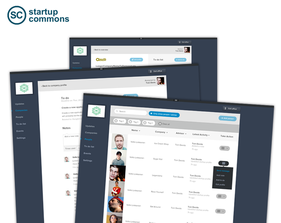 The number of startup communities is growing day by day. Therefore, the demand for an all-in-one tool, which allows to manage effectively and easily those communities, constantly increases. Startup Commons’ Certified Developer Program evolved from an ongoing software development needs and our expanding global customer base. The aim of this program is to develop skilled technicians who understand our platform and startup ecosystems’ challenges. At Startup Commons we aim to build common infrastructure for startups around the world to make the startup journey easier and facilitate active dialog among all stakeholders at the startup scene (such as incubators, accelerators, investor, universities, startups, mentors, business advisors, inventors, VC companies, etc.) The Certified Developer Program aim to attract skilled and innovative developers to the startup ecosystems’ field, to ensure that more and more startups ecosystems emerge at every corner of the world. We are building a pool of talented developers to provide effective and innovative solutions for our clients. The goal of the program is to ensure that our Certified Developer Partners have the skills required to provide excellent service to our customers worldwide, in both quality of work and communication skills. We believe that the program gives a chance to our in-house developers to fully focus on building the best product, while our certified developers help to build customized solutions. This approach gives our customers access to developers who understand our platform and can perform specific requests for them, without having to go through us each time. During the certification process developers get hands-on training on the functionality of the platform, learn about the roles of different users, different feature, basic software architecture and go through specific development projects. Moreover, developers are working closely with our existing in-house team what learn more about our customer and their needs, and the solutions and services we provide to overcome challenges and support startups in the most cost effective and transparent way. Our Certified Developer Program is open to development companies, UX&UI designer, individual back-end & front-end developers. It is our pleasure to introduce you to a handful of the development companies, who has accomplished our program and are committed to provide the best service to our customers: ChangeLab23, Sunrise Software Solution, Twelve & Six, Justcoded. We believe that in a long term our Certified partners who understand the startup ecosystem model, have the necessary technical skills and competences, will help us to shape the way startup communities are managed. We believe that our Certified Developer Program will serve the interest of our customers, developers and many startup ecosystems. To become our Certified Developer Program, click here and get started. Make no mistake about it. Silicon Valley is expensive. Actually, it’s very expensive. But if you’ve ever spent any time in the Valley then you already knew that. For those on the outside, then you can believe that rumors surrounding Silicon Valley’s pricey cost of living are true.
Should you move your business to Silicon Valley? Before you make that decision, here are a few things you should keep in mind? But, just how expensive is Silicon Valley really? Compared to the rest of the country, the cost of living is 87% higher in the Valley than any other American city. When it comes to housing, Silicon Valley is also the most expensive in the U.S. In fact, based on a survey conducted by Coldwell Bankers in its “Luxury Market Report 2014,” Woodside, CA is the nation’s top luxury market. Woodside wasn’t the only town located in Silicon Valley to crack the top five. Portola Valley was third, with Hillsborough coming in at number four. So, if you wanted to relocate to Woodside, expect to spend $949,000 on a two bedroom house with one bathroom and a fireplace – this for the record was the cheapest listed house in Woodside. Trulia, however, found that the average listing price for homes in Atherton at $9,347,107, which could make it the most expensive city in the country. But what’s a couple million dollars when you’re living in the same area as the guys who founded Google, Larry Ellison, Mark Zuckerberg, George Lucas and Paul Allen? In case you were wondering, there are 71 billionaires who call the Bay Area home, so of course it’s going to be expensive. So what if you’re not a billionaire? Let’s say you’re just you’re a teacher or even an engineer, what’s the price range? The median price for a home is $550,000 in the whole bay area. If you’re looking at San Francisco, it’s around $1.1 Million. And rent? You’re looking at around $3,000 a month for a two-bedroom apartment, which is 76% more than the national average. I personally pay $2,700 a month for my one bedroom in Palo Alto. I had to consider this before I moved my startup to Silicon Valley. To put it another way, if you have a family of four, you would need $90,000 a year to cover rent, food, transportation and childcare. To be more upfront, Silicon Valley is the 7th least affordable housing market for middle class families, San Francisco captured the top spot. Of course, the housing situation isn’t the only major cost in the Silicon Valley. Living in California also means that if you make over $46,776 a year, the state is going to hit you with a 9.3% income tax. Speaking of taxes, whenever you go out and do some shopping, just remember that California has the second highest state and local sales tax rates at 9.08%. Even Hawaii has more favorable sales tax rate at 4.35%. If you look at the ten most expensive cities in regard to sales tax, Fremont and San Francisco are included. As for basic necessities. Silicon Valley is 62% higher than the national average. And gas prices? Both San Jose and San Francisco are included in the ten most expensive cities for gas at over $4 per gallon. Is any of this that big of a concern when you reside in one of the highest paying areas in the country? (Web developers earn $25,000 more than the national average and customer service representatives and lawyers also do well here). Well, it should. Despite Silicon Valley having a reputation for having a higher median income (it was $60,000 in 1993 compared to the $30,000 elsewhere in the country) it’s still a concern if weighing your options on whether or not to live in Silicon Valley. For example, if you made $92,300 a year in the Valley, you would need $74,800 to live that same exact lifestyle in New York City. That’s not saying that you should relocate or never move to the Valley. It’s just bringing up a comparison to give you a better understanding of how pricey, it is to live in Silicon Valley. If you already reside in the Valley, then you already know how expensive it is for housing, gas, food, etc. And hopefully you’ve been fortunate enough to make enough in your salary that you can enjoy the weather and everything else that Silicon Valley has to offer. However, if you’re looking to move to this area because you think it’s magical and can help make your startup a success, you may want to consider other options if money is tight. While it’s an incredible place to work and play, the Valley is really, really expensive. _____________________________________________________________________________________ This is an edited version of a post originally posted at yourstory.com, by John Rampton (President at Adogy), an entrepreneur, full-time computer nerd and startup expert. You are free to re-edit and repost this in your own blog or other use under Creative Commons Attribution 3.0 License terms, by giving credit with a link to www.startupcommons.org and the original post. In his new book, Biz Stone, the Co-founder of Twitter, discusses the power of creativity and how to harness it through stories from his remarkable life and career. Stone is known as the creative, effervescent, funny, charming, positive, optimistic, altruistic and yet remarkably savvy Co-founder of Twitter. His book Things a Little Bird Told Me: Confessions of the Creative Mind spans 224 pages and 18 chapters, and covers the pivotal and personal stories from his life along with lessons earned and learned the hard way.
Born in Boston in 1974, Biz Stone’s first startup was Xanga. He was recruited by Google in the early 2000s, and connected with Blogger founder Evan Williams; the pair later left to work on their own startup Odeo. Twitter was founded in 2007 after a hackathon when the original videocasting product did not pan out as materialised. Twitter’s dizzying global success led to Stone being recognised by ‘Time’ Magazine as one of the most influential persons in the world. His other books include Who Let the Blogs Out? A Hyperconnected Peek at the World of Weblogs. “Creativity is what makes us unique, inspired and fulfilled. This book is about how to tap into the creativity in and around us all,” Stone begins. Here areTop 20 Takeaways from his book, offering insights into creativity, ethics and global vision. 1. Create opportunities, don’t wait for them “Opportunity is manufactured,” says Stone. Don’t wait for circumstances to align your stars, go ahead and make the opportunity yourself. He used this principle even in school days to create a lacrosse team since he was not good in other sports; he also landed his first job as a book cover designer by submitting a cover to the art director even though he was just interning as a delivery boy. 2. Start with an idea Don’t dig into specifics first, start off with an idea. “If you take an idea and just hold it in your head, you unconsciously start to do things that advance you toward that goal,” says Stone. “Have confidence in your ideas before they even exist,” he advises. Sometimes even a sense of desperation that you will eventually get an idea will keep you going. 3. Invest emotionally in your idea “If you don’t love what you are building, if you’re not an avid user yourself, then you will most likely fail even if you are doing everything else right,” says Stone. His startup Odeo did not go too far because he was not into audio podcasts himself, and therefore missed out on important features such as sound quality. Twitter, on the other hand, brought Stone much more joy and excitement. If you are not engaged, you cannot go on, there will be no gravity. 4. Creativity has infinite approaches One thing Stone learnt as a book cover designer is that there are infinite approaches to frame, understand and solve a problem. If one of your creative ideas does not work or does not find acceptance, let go and move on to another one. Don’t take rejection personally. “Creativity is a renewable resource. Challenge yourself every day. Be as creative as you like, as often as you want, because you can never run out. Experience and creativity drive us to make unexpected offbeat connections. It is these non-linear steps that often lead to the greatest work,” explains Stone. He drew on this principle while working at Google – full of PhDs while Stone himself was a college dropout; he advocated a focus on the human aspects of tools and not just technical. 5. Learn to harness constraints for creativity “Constraint inspires creativity,” says Stone, drawing on a number of examples, including his own. Steven Spielberg had a limited budget for the movie Jaws – so instead of creating an expensive replica, he decided to shoot from the ‘shark’s point of view’ – which turned out to be even scarier. Harrison Ford had the runs while shooting The Raiders of the Lost Ark – and instead of dueling a swordfighter in one scene, he just proposed a gunshot – which became an iconic moment in the film. Due to resource constraints, ARM came up with chips which were just not good enough for PCs – but ended up being perfect for cellphones. “Embrace your constraints. They are provocative. They are challenging. They wake you up. They make you more creative. They make you better,” says Stone. Detractors initially said Twitter’s 140 character limit was constraining – but that unleashed a new form of wit and creativity, and power for activists. |
Supporting startup ecosystem development, from entrepreneurship education, to consulting to digital infrastructure for connecting, measuring and international benchmarking.
Subscribe for updates
Startup ecosystem development updates with news, tips and case studies from cities around the world. Join Us?Are you interested to join our global venture to help develop startup ecosystems around the world?
Learn more... Archives
December 2023
Categories
All
|
- Startup Commons
- Business Creators
-
Support Providers
- About Support Providers
- Learn About Startup Ecosystem
- Startup Development Phases
- Providing Support Functions
- Innovation Entrepreneurship Education
- Innovation Entrepreneurship Curriculum
- Growth Academy eLearning Platform
- Certified Trainers
- Become Growth Academy Provider In Your Ecosystem
- Growth Academy Training On-Site By Startup Commons
-
Ecosystem Development
- About Ecosystem Developers
- What Is Startup Ecosystem
- Ecosystem Development
- Ecosystem Development Academy eLearning Platform
- Subscribe to Support Membership
- Ecosystem Operators
- Development Funding
- For Development Financiers
- Startup Ecosystem Maturity
- Case Studies
- Submit Marketplace App Challenge
- Become Ecosystem Operator
- Digital Transformation
- Contact Us
- Startup Commons
- Business Creators
-
Support Providers
- About Support Providers
- Learn About Startup Ecosystem
- Startup Development Phases
- Providing Support Functions
- Innovation Entrepreneurship Education
- Innovation Entrepreneurship Curriculum
- Growth Academy eLearning Platform
- Certified Trainers
- Become Growth Academy Provider In Your Ecosystem
- Growth Academy Training On-Site By Startup Commons
-
Ecosystem Development
- About Ecosystem Developers
- What Is Startup Ecosystem
- Ecosystem Development
- Ecosystem Development Academy eLearning Platform
- Subscribe to Support Membership
- Ecosystem Operators
- Development Funding
- For Development Financiers
- Startup Ecosystem Maturity
- Case Studies
- Submit Marketplace App Challenge
- Become Ecosystem Operator
- Digital Transformation
- Contact Us

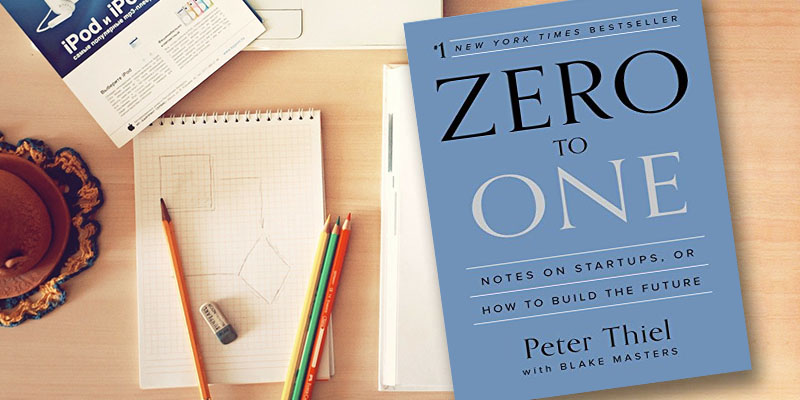

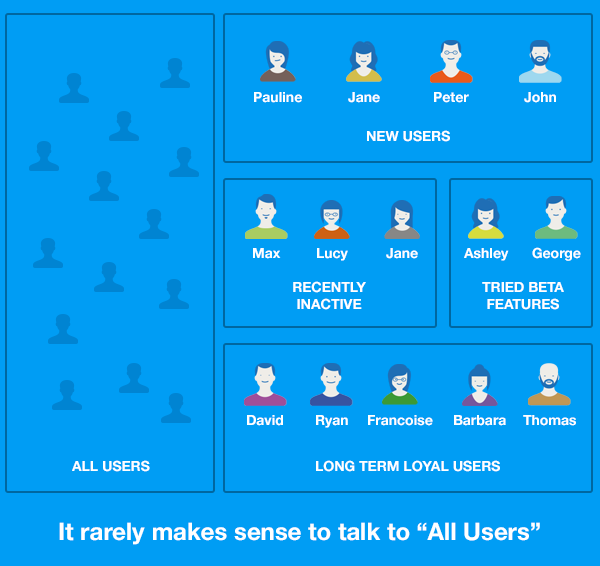
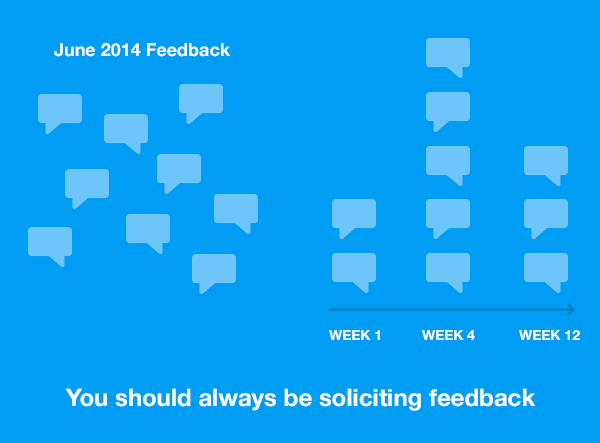
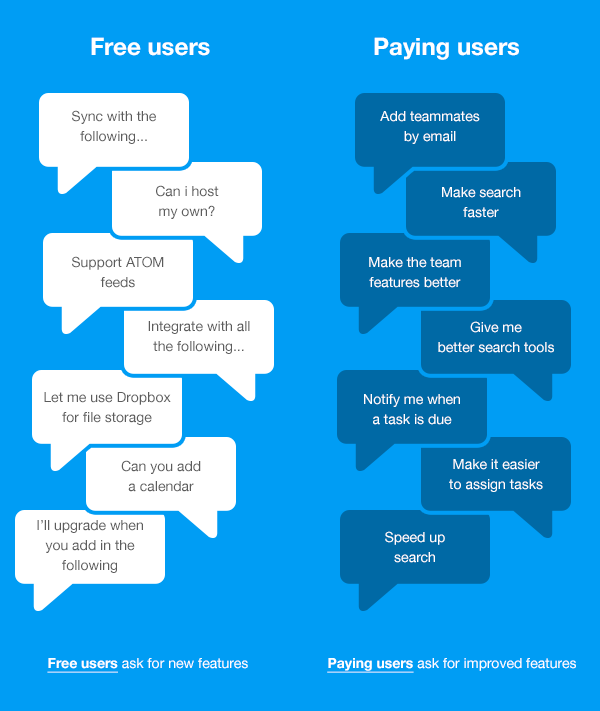
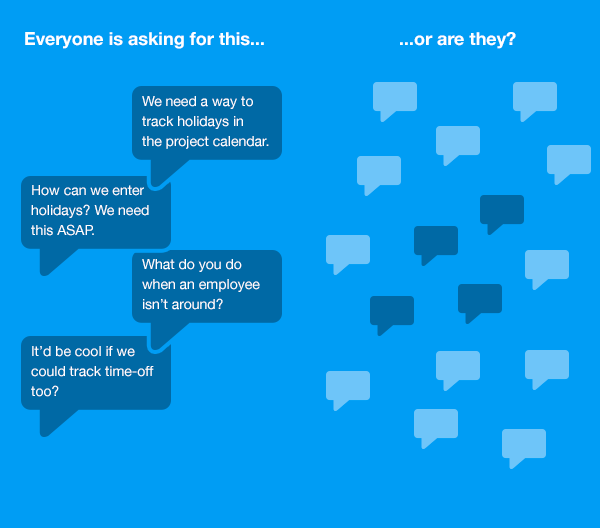
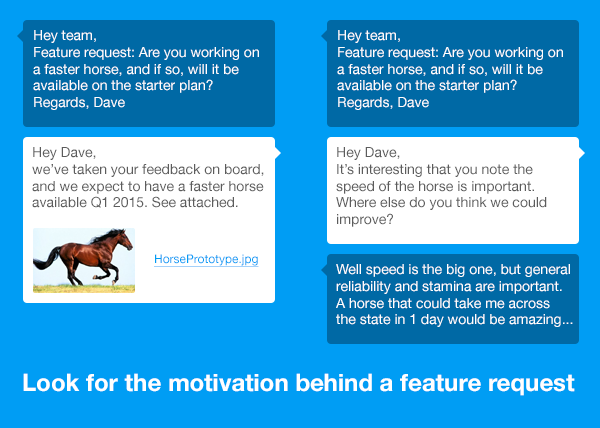





 RSS Feed
RSS Feed

